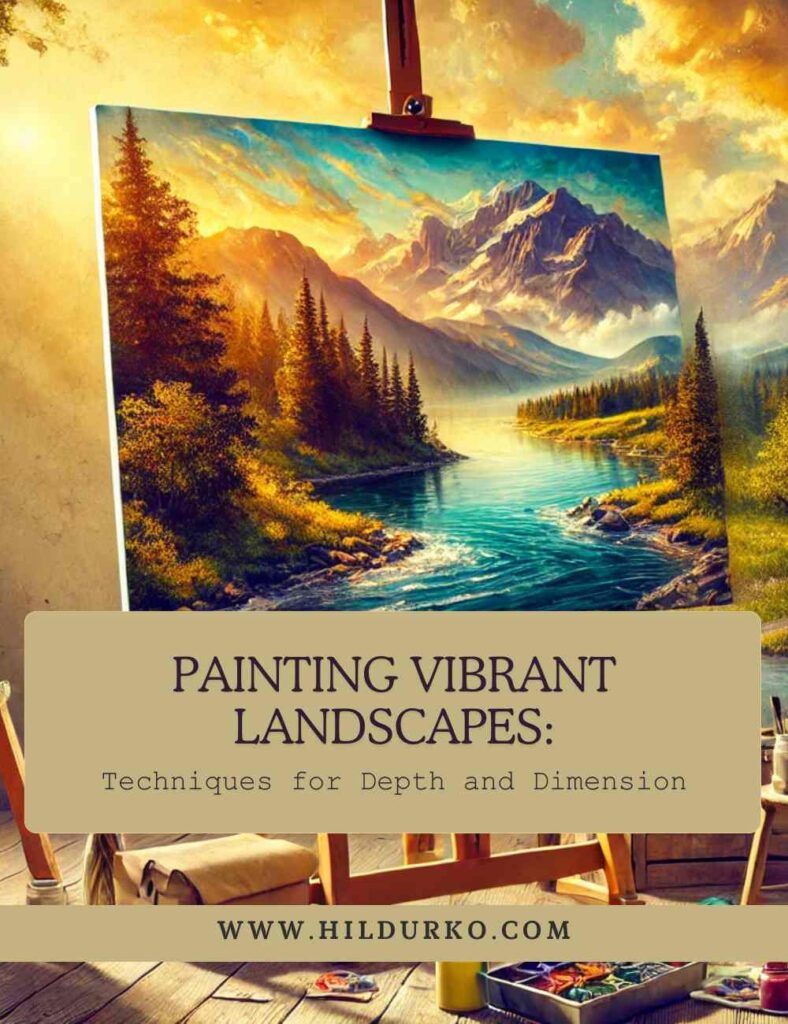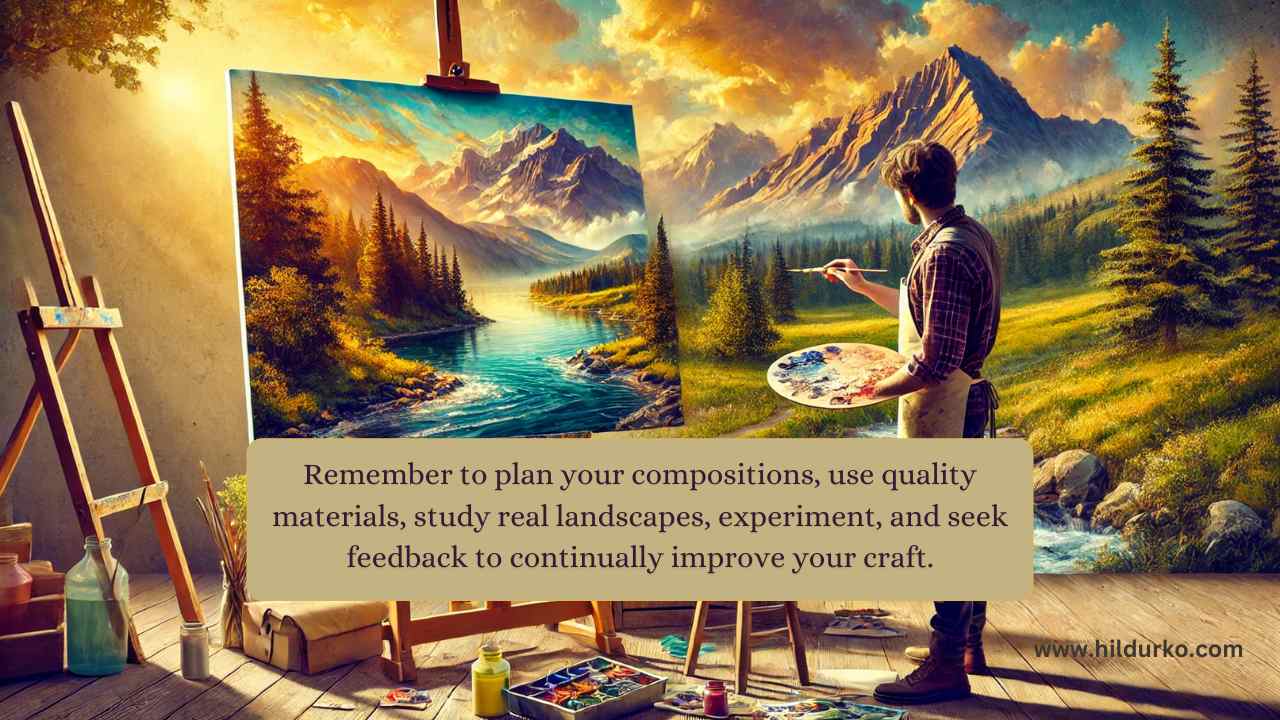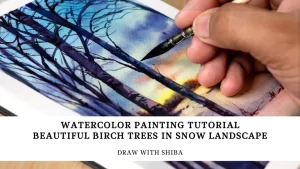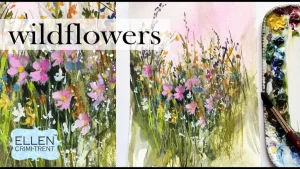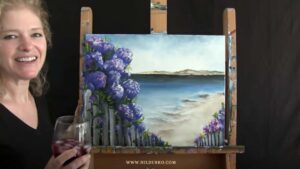Landscape painting is a beloved subject among artists, offering endless possibilities to capture the beauty of nature. However, while many tutorials focus on the basics, advancing your skills to create vibrant landscapes with depth and dimension requires more nuanced techniques. This guide delves into advanced methods to help experienced artists elevate their landscape paintings.
Understanding Depth and Dimension
Before diving into specific techniques, it’s essential to understand what creates depth and dimension in a painting. Depth is the illusion of space and distance within a painting, making it look three-dimensional. Dimension adds a sense of volume and solidity to the elements within your landscape. Both are crucial for bringing a sense of realism and vibrancy to your work.
Techniques to Enhance Depth and Dimension
1. Layering and Overlapping
Layering involves painting elements in stages from background to foreground, creating a sense of depth. Start with the sky and distant hills, then gradually add closer elements like trees, buildings, and finally, foreground details like flowers or rocks. Overlapping objects within these layers also helps to convey distance; objects partially obscured by others appear further away.
2. Aerial Perspective
Aerial or atmospheric perspective refers to how the atmosphere affects the appearance of objects as they recede into the distance. Distant objects tend to be lighter, less detailed, and cooler in color due to the scattering of light by particles in the air. Incorporating this effect can significantly enhance the depth of your landscape. For example, distant mountains might appear hazy and blue compared to the vibrant green of closer trees.
3. Linear Perspective
Linear perspective involves using converging lines to create the illusion of depth. This technique is particularly effective in landscapes with roads, rivers, or pathways. The lines of these elements should converge towards a single point on the horizon, known as the vanishing point, helping to draw the viewer’s eye into the scene.
4. Color Temperature and Contrast
Using color temperature effectively can enhance the sense of depth. Warm colors (reds, oranges, and yellows) tend to advance towards the viewer, while cool colors (blues, greens, and purples) recede. Applying this principle, you can use warmer tones for foreground elements and cooler tones for background elements. Additionally, increasing contrast in the foreground and reducing it in the background can further emphasize depth.
5. Value Gradation
Values (lightness or darkness of colors) play a critical role in creating dimension. Gradual shifts in value can suggest the form and contour of landscape features. For instance, shading one side of a tree darker than the other can give it a three-dimensional appearance. Similarly, transitioning from light to dark in the sky can imply a setting sun, adding depth to the scene.
6. Textural Variation
Incorporating different textures can add realism and dimension to your landscapes. Use varied brushstrokes or tools to depict the roughness of a rocky foreground, the smoothness of a distant lake, or the softness of grassy fields. Texture not only adds interest but also helps distinguish between different elements in your painting.
7. Detail Management
Managing the level of detail is crucial for creating depth. Foreground elements should be more detailed, as they are closer to the viewer. As elements recede into the background, reduce the amount of detail. This selective detailing helps focus the viewer’s attention and reinforces the illusion of depth.
Practical Tips for Implementing These Techniques
Plan Your Composition
Before you start painting, plan your composition carefully. Sketching a rough outline can help you determine where to place key elements and how to structure your layers for maximum depth.
Use Quality Materials
High-quality paints, brushes, and canvases can make a significant difference in achieving vibrant colors and fine details. Investing in good materials can enhance the overall quality of your work.
Study Real Landscapes
Spend time observing real landscapes. Note how light, color, and atmosphere affect the appearance of different elements. Taking photographs or painting en plein air (outdoors) can provide valuable references for your studio work.
Experiment and Practice
Don’t be afraid to experiment with different techniques and approaches. Practice regularly to refine your skills and develop your unique style.
Seek Feedback
Share your work with fellow artists or join a local art group. Constructive feedback can provide new perspectives and help you identify areas for improvement.
Conclusion
Mastering the art of creating depth and dimension in landscape painting can transform your work, making it more vibrant and realistic. By applying advanced techniques such as layering, aerial and linear perspective, color temperature, value gradation, textural variation, and detail management, you can bring your landscapes to life. Remember to plan your compositions, use quality materials, study real landscapes, experiment, and seek feedback to continually improve your craft. Happy painting!
For more helpful tips, take a look at these artists.
For more from Andrew Tischler
For more from KevinOilPainting
LIKE THIS POST?
Share the link on your social media
or pin the image below to your Pinterest board!
